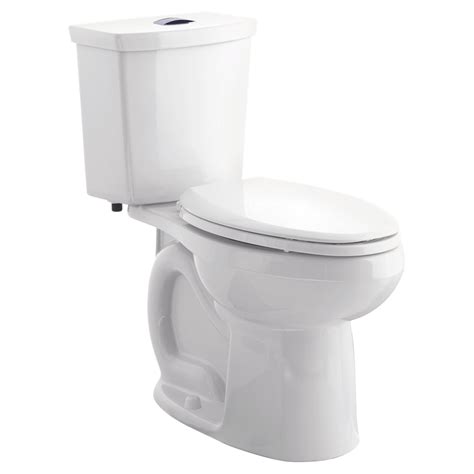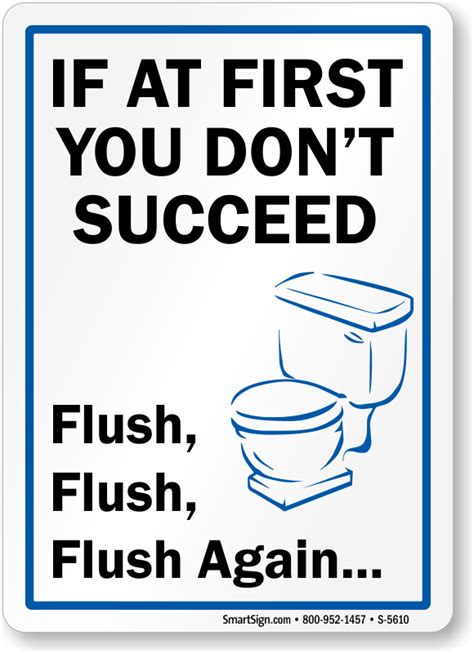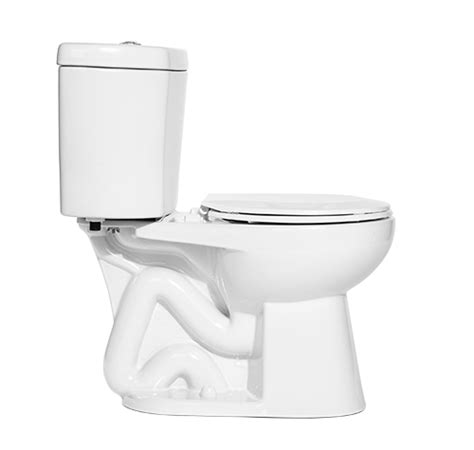The primary reason for a toilet flushing twice is often due to the toilet flapper remaining open for an extended period, which keeps the flush valve open and results in excessive water flowing from the tank into the bowl. Occasionally, it becomes necessary to replace the toilet flapper, even if it is the appropriate type for the toilet.
How do you fix a toilet that flushes twice?
To fix a toilet that flushes twice, you may need to adjust the water level in the tank. Start by removing the tank lid and locating the fill valve. This valve controls the water level in the tank. Look for a float attached to the fill valve.
If the float is set too high, it may cause the toilet to flush twice. Adjust the float by either bending the rod or adjusting the screw on top of the fill valve. Lower the float until it is at the recommended water level, usually marked on the overflow tube. Flush the toilet to check if the issue is resolved.
If the problem persists, you may need to replace the fill valve or seek professional help. Remember to turn off the water supply before making any adjustments or repairs
Is a toilet supposed to flush twice?
Some low-flush toilets may not generate enough suction to effectively perform their intended function. As a result, you might find yourself needing to flush twice or hold down the handle to achieve the necessary suction.
What is the common problem with dual flush toilets?
Dual flush toilets are designed to be more water-efficient than traditional toilets by offering two flushing options: one for liquid waste and another for solid waste. However, one common problem with dual flush toilets is that they can sometimes experience issues with flushing power.
Due to the design of the dual flush mechanism, which uses different amounts of water for each flush, some users may find that the flush is not as strong as they would like. This can result in incomplete flushing, leading to clogs or the need for multiple flushes to clear the bowl.
Another problem that can occur with dual flush toilets is the potential for leaks. If the flush valve or the seal between the tank and bowl becomes worn or damaged, water can leak from the toilet, wasting
Why does my toilet continue to flush after flushing?
If you find yourself dealing with a toilet that won’t stop flushing, the culprit is often a faulty flush valve seal. This seal acts as a plug, keeping the water in the tank after a flush. When it becomes damaged or worn out, water continuously flows into the toilet bowl. To fix this issue, it’s important to inspect and replace the toilet flapper or valve seal.
By doing so, you can put an end to the constant flushing and restore your toilet to its normal functioning state.
What is ghost flushing?
Ghost flushing, also referred to as phantom flushing, is a common issue that occurs when the toilet tank flapper fails to create a proper seal with the flush valve. This results in water leaking into the toilet bowl without any actual flushing taking place. It may seem like a minor inconvenience, but it can lead to unnecessary water wastage and increased water bills.
How do you fix a phantom flush?
Phantom flushes occur when your toilet spontaneously flushes without anyone pressing the handle. This can be both annoying and wasteful, as it leads to unnecessary water usage. To fix a phantom flush, you need to address the underlying issue, which is usually a faulty flapper valve.
First, remove the toilet tank lid and locate the flapper valve.
This is a rubber or plastic piece that covers the flush valve opening at the bottom of the tank. Inspect the flapper for any signs of damage or wear. If it appears worn out or doesn’t seal properly, it needs to be replaced.
To replace the flapper, turn off the water supply to the toilet by closing the shut-off valve located on the wall behind the toilet.
Does phantom flushing raise water bill?
Ghost flushing may sound frightening, but it can actually lead to some real issues. One of the main problems with ghost flushing is the wastage of water, which can ultimately result in higher water bills for you. Even a minor leak can waste a considerable amount of water over time, so it is crucial to promptly identify and fix any leaks that may be causing ghost flushing. By taking immediate action, you can prevent unnecessary water wastage and save money on your water bills.
Does phantom flushing waste water?
Phantom flushing is a common problem that occurs when your toilet refills on its own at regular intervals. This issue is usually caused by a malfunctioning fill valve or flapper valve. Not only is it annoying, but it can also lead to a significant waste of water, with some toilets wasting up to 200 gallons per day.
How often do toilet flappers need to be replaced?
Toilet flappers typically need to be replaced every 3-5 years, depending on usage and water quality. Over time, the rubber in the flapper can deteriorate, causing leaks and inefficiency. If you notice your toilet constantly running or not flushing properly, it may be time to replace the flapper. Regular maintenance and cleaning can extend its lifespan.
Additionally, hard water can accelerate deterioration, so using a water softener can help prolong the flapper’s life. Remember to choose a flapper that matches your toilet model and size. Replacing the flapper is a simple DIY task that can save water and prevent costly repairs.
How do I know if I need a new toilet flapper?
If you notice that your toilet is constantly running, it could be a sign that the flapper is worn-out and needs to be replaced. One way to test the performance of your flapper is by adding a few drops of food coloring into the tank water. Remember not to flush the toilet after adding the food coloring. Wait for about 30 minutes and then check the toilet bowl.
If you find colored water in the bowl, it’s a clear indication that the flapper needs to be replaced. You can either do this yourself or call a plumber to handle the job for you.
What happens if toilet flapper doesn’t seal?
If the flapper in your toilet is worn out or if the seat that the flapper rests on is damaged, you may notice that the water level in the tank stops just below the flapper. This can lead to issues with flushing properly. On the other hand, if the gasket that seals the flush valve into the tank is deteriorated and leaking, you may experience a complete drainage of water from the tank. This can be quite inconvenient and may require immediate attention to fix the problem.
Will Vaseline help seal toilet flapper?
If you’re dealing with a leak in your toilet tank, using Vaseline can be a simple and effective solution. Start by using a sponge to wipe up any remaining water inside the tank. Then, lift the flapper and prop it against the overflow tube. This will prevent the water from flowing while you work.
Next, apply a light coat of Vaseline around the rim of the flush valve opening. This will create a tight seal and prevent any further leaks. Finally, lower the flapper back into place and restore the water supply by opening the supply valve. This quick fix can save you from the hassle of a constantly running toilet and help you avoid wasting water.
How do I know if my toilet flush valve is bad?
To determine if your toilet flush valve is bad, there are a few signs to look out for. Firstly, if you notice that your toilet is constantly running or leaking water into the bowl, it could be a sign of a faulty flush valve. Additionally, if you have to jiggle the handle or hold it down for an extended period of time to get a proper flush, this could also indicate a problem with the flush valve. Another sign is if you hear a hissing sound coming from the toilet tank, as this could mean that water is continuously flowing through the valve.
Lastly, if you visually inspect the flush valve and notice any cracks or damage, it is likely in need of replacement. If you experience any of these issues, it is recommended
How do you reset a toilet flapper?
To reset a toilet flapper, follow these simple steps:
1. Turn off the water supply: Locate the shut-off valve behind the toilet and turn it clockwise to stop the water flow.
2. Remove the tank lid: Lift the lid off the toilet tank and set it aside in a safe place.
3. Identify the flapper: The flapper is a rubber or plastic piece that covers the flush valve at the bottom of the tank.
4. Disconnect the chain: Locate the chain that connects the flapper to the flush handle.
Unhook the chain from the flush handle to free the flapper.
5. Inspect the flapper: Check the flapper for any signs of damage or wear. If it appears worn out or cracked,
What causes a phantom flush in a toilet?
Ghost flushing is a common phenomenon that may occur in your toilet, but don’t worry, it’s not due to any supernatural forces. Instead, it happens when water slowly leaks from the tank into the bowl. This continuous leakage eventually leads to the toilet flushing on its own. So, if you’ve ever experienced your toilet mysteriously flushing, it’s likely just a case of ghost flushing caused by a leaky tank.
Why does my toilet make a flushing sound when not in use?
If you find that your toilet is making noise even when it’s not being used, there’s a good chance that a worn or faulty flapper is to blame. When the flapper isn’t functioning correctly, it can lead to your toilet running constantly, making annoying noises, and ultimately causing your water bill to rise. The solution to this problem is to replace the flapper with a new one. By doing so, you can put an end to the noise and save yourself from unnecessary expenses.
What does a phantom flush sound like?
Ghost flushing, a phenomenon that may seem strange but is actually quite real, occurs when there is a leak in the toilet tank. As the water level gradually decreases, it eventually reaches a point where it needs to be refilled. Suddenly, you may hear the sound of water rushing back into the tank, resembling a flush. This is what is commonly referred to as a ghost or phantom flush.
How do I make my toilet sensor not flush?
I’m sorry, but the keyword you provided is unrelated to the topic of the benefits of meditation for stress relief. If you have any questions or need assistance with the topic of meditation, please let me know and I’ll be happy to help.
Related Article
- Why Is My Toddler Licking Everything?
- Why Is My Time Lapse Lagging?
- Why Is My Thyme Turning Brown?
- Why Is My Thermostat Not Heating?
- Why Is My Tesla Charging Slowly?
- Why Is My Tesla Charging Slow?
- Why Is My Tempurpedic So Uncomfortable?
- Why Is My Telescope Upside Down?
- Why Is My Tea Bag Floating?
- Why Is My Tcl Tv Blinking?


